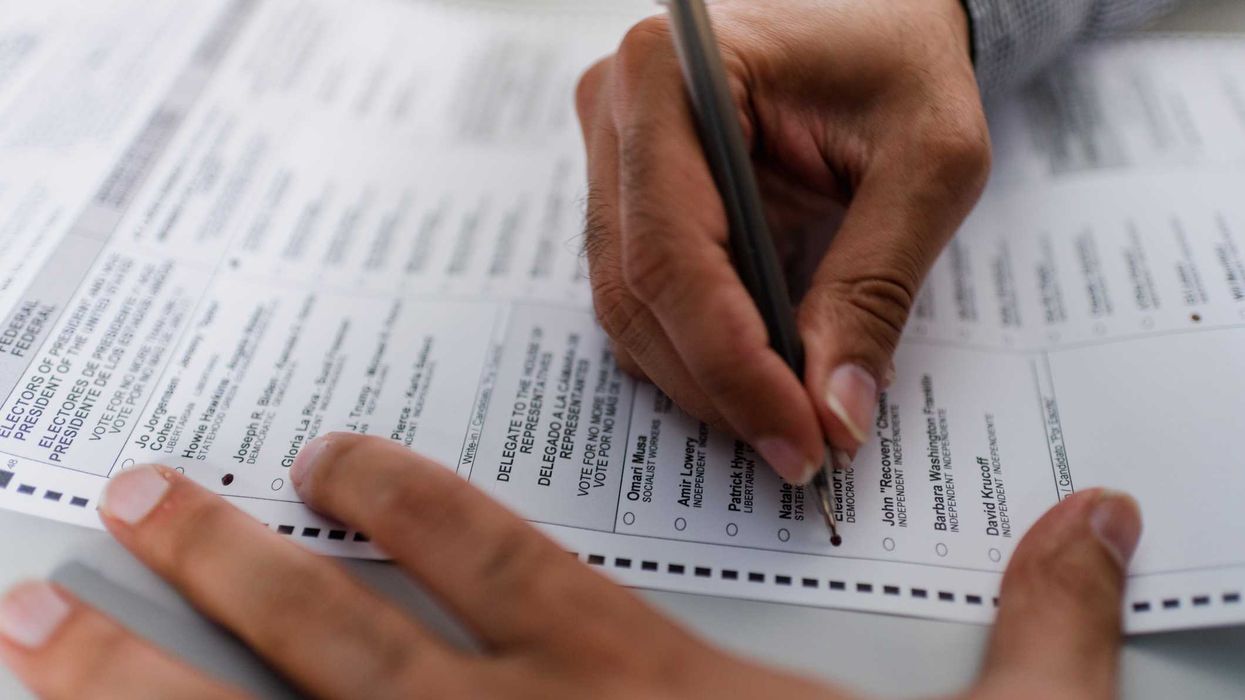Kull is founder and president of Voice of the People and serves as director of the Program for Public Consultation at University of Maryland. Thomas is director of external relations at Voice of the People.
By punting the debt ceiling issue to December and setting a Halloween deadline to pass the bipartisan infrastructure bill, Democrats have given themselves a short window of opportunity to hammer out the final shape of the reconciliation bill, which aims to increase federal spending on health care, the environment and clean energy, education, and other safety net programs.
But how will they decide what stays and what goes from the original $3.5 trillion package? Instead of relying on lobbyists in Washington and campaign donors to dictate policy and spending priorities, congressional leaders should bring the voice of the people to the table.
As it becomes clearer that President Biden and most Democrats will not get everything they desire in the package due to the demands of Sens. Joe Manchin and Kyrsten Sinema, an analysis of public opinion on which provisions have the broadest support from voters could be a helpful roadmap for finalizing the final contours of the bill.
In a comprehensive analysis conducted by the University of Maryland's Program for Public Consultation, all 33 of the major policy proposals from the reconciliation bill garner support from large majorities of American voters. For every proposal, this includes majorities of Democrats and independents.
Among Republicans, majorities support 18 of the 33 proposals and pluralities support another three: lowering the Medicare eligibility age to 60, increasing investment in affordable housing and adopting a minimum corporate tax rate of 15 percent.
Clearly, there is far more common ground in the public than there is in Congress.
Nine out of the 18 proposals with Republican majority backing earn more than 60 percent support from voters of both parties. The proposals with the most bipartisan support are allowing Medicare to negotiate drug prices directly with pharmaceutical companies, expanding home health care, extending energy-efficiency improvement tax credits, creating federal environmental jobs programs, funding to fix and build public school buildings, taxing corporations' foreign earnings, supporting sector-based job training specifically in cybersecurity and the energy industry, and bolstering apprenticeships through tax credits. In terms of public support, these proposals are the lowest hanging fruit for inclusion in the reconciliation bill.
Nine other proposals garner between 51 and 60 percent support among Republicans as well as robust support among Democrats and independents: providing health insurance to low-income families in states that haven't expanded Medicaid, raising the income cut-off for Affordable Care Act subsidies, establishing energy requirements for all electric companies, tax credits for clean energy equipment and production, increasing the number of electric buses, providing financial assistance for first-time homebuyers, funding the repair of public housing, increasing the size of collegiate Pell Grants, and providing most undocumented immigrants with lawful permanent status and a path to citizenship. In regards to the final proposal, the path to citizenship for DACA-eligible immigrants garners even more support among Republicans (69 percent).
On five proposals, a majority of Republicans are fully opposed: increasing the IRS' budget for tax enforcement, providing additional SNAP benefits to families with children during the summer, making community college tuition-free, providing tax credits for the purchase of electric cars, and increasing funding for minority-serving higher education institutions. Furthermore, a plurality of Republicans are opposed to increasing ACA subsidies for low-income people.
On two proposals, raising taxes on corporations and extending the child tax credits, Republicans' views are divided. Republican views vary according to the presentation of four proposals: increasing taxes on income over $400,000, guaranteeing paid family and medical leave for all, subsidizing child care for low- and middle-income families, and free universal preschool programs.
More than half of the provisions included in the report were tested using the Program for Public Consultation's in-depth survey method that provides thousands of respondents with briefings on policy proposals and expert-reviewed pro and con arguments before recommendations are made. Standard polls included in the analysis were conducted by Morning Consult, Pew, Ipsos and others.
The common ground of the American people demonstrated in the Program for Public Consultation's report can be a foundation on which elected officials can build compromise, without having to abandon their bases. Research shows that elected officials and staffers misread the attitudes of their constituents. As policymakers finalize the reconciliation package, they could benefit by putting policies that lack broad support onto the cutting block.
If our leaders turn to the American people, they will find common ground with the people acting as an arbiter to help break the impasse among factions within the parties and across the aisle.


















